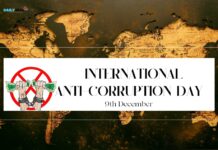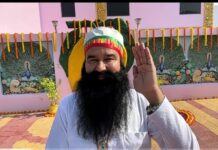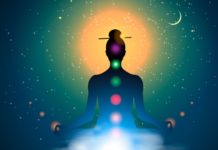Jallianwala Bagh Massacre:
On April 13 in Amritsar, we pay our thankfulness to the martyrs who lost their lives in Jallianwala Bagh. Indians will be Motivated by their sacrifice for years to come. India marks the anniversary of the tragedy, which claimed hundreds of lives, today.
Let’s Consider the Jallianwala Bagh Massacre, its origins, and its effects.
Jallianwala Bagh Massacre
● The Amritsar Massacre, sometimes stated to as the Jallianwala Bagh Massacre, occurred on April 13, 1919.
● On that particular day, British soldiers opened fire on a sizable gathering of unarmed Indians in Amritsar, Punjab area (now Punjab state), India.
● Children made up among the deaths of several hundred individuals, and hundreds more were injured.
● Gandhi’s whole dedication to the cause of Indian nationalism and independence from Britain was sparked by this occurrence.
●A pivotal event in modern Indian history.
● The incident undeniably damaged the relationship between India and Great Britain.
● This massacre showed the inhumane tactics used by the British when they mercilessly opened fire on a multitude of people.
Root Causes of the Jallianwala Bagh Massacre
The Jallianwala Bagh massacre was profoundly influenced by the politics of the era, which is something we must recognise if we wish to comprehend its underlying reasons.
● _In 1919, while also participating in World War I, the British administration had to deal with the increasing nationalist upsurge among Indians.
● _After receiving advice from the Sidney Rowlatt-led Rowlatt Committee, the British Legislative Council in London implemented the controversial Rowlatt Act in 1919 in an effort to quell the burgeoning nationalist sentiments.
● _The Anarchical Revolutionary Crimes Act, 1919, was the name given to the Rowlatt Act in legal documents.
● _Two proposals were proposed in the Central Legislature in accordance with the suggestions; these bills ultimately became known as the “Black Bills.”
● _This contentious law gave the British oppressive authority to imprison for two years without charge or judicial review any British Indian citizen suspected of revolutionary activity.
● _Notwithstanding the unanimous opposition of the Indian members of the Imperial Legislative Council, the measure was passed.
SATYAGRAHA VS. ROWLATT ACT
Many were unhappy with the act because of its tyranny, and when Mahatma Gandhi called for a Satyagraha to protest it, there was unquestionably a big response.
How many people were died in the massacre?
◆ The number of deaths during the Jallianwala Bagh Massacre was not officially recorded.
◆ The Congress stated that more than 1000 people lost their lives in the massacre.
◆ However the British government’s official investigation found that there were only 379 fatalities.
Consequences of the brutality
● A public inquiry of the massacre was held in November 1920 in London by a commission headed by Lord Hunter and convened by the British government.
● The committee met in Lahore, and its panel was made up of Hunter as well as four British and three Indian members.
● As Dyer was being cross-examined by the Indian attorneys.
● He didn’t help himself by admitting that if he could have moved his machine-gun-equipped armoured cars closer to the throng, he would have used them.
● Dyer, who had no regrets about any of his deeds, insisted that it was the only way to put an end to a rebellion or, as he put it, “to produce the essential moral and broad effect” that rebellion would not be permitted (Mansingh, 201).
●  The committee came to the conclusion that Dyer’s bigotry towards Indians and perhaps even his mental disorder had clouded his judgement.
The committee came to the conclusion that Dyer’s bigotry towards Indians and perhaps even his mental disorder had clouded his judgement.
● The Hunter Committee only punished Dyer and O’Dwyer for using excessive force because the British members of the committee were adamant that using force to maintain British dominance in India was necessary.
● If the British authorities believed that the committee’s recommendations would put an end to the situation, they were completely mistaken.
● King George V (reigned 1910–1936) was counselled by Chelmsford, who had altered his mind, that perhaps Dyer should not, after all, be hailed as the determined protector of the British Empire.
● After receiving a six-month furlough, Dyer went back to England.
Reactions and Impacts of the Massacre
● The massacre served as a catalyst for change in the history of fight for freedom.
● The congress meeting was placed at Amritsar in December 1919.Peasants and other people in great counting attended.
● It was quite clear that the acts of brutality had only strengthened the people’s will to fight for their freedom and against injustice.
● The Indians were really upset over this tragedy.
● Many Indians renounced their earlier allegiance to the British and turned nationalist, beginning their quest for independence.
● Punjab was placed under martial law.
● As a show of defiance against the British, Rabindranath Tagore renounced his British Knighthood.
● Mahatma Gandhi surrendered his Kaiser-i-Hind, which the British gave him for his contributions to the Boer War.
● Winston Churchill debated in the House of Commons in 1920, criticising Dyer’s behaviour.
The massacre was an extremely dishonourable conduct. It went too far in terms of brutality. Even now, anyone can shiver after viewing the bullet wounds from that occurrence. I honour and mourn with the martyrs. We must all pray for peace, harmony, and fraternity around the world and work to make the world a lovely and peaceful place to live.







































